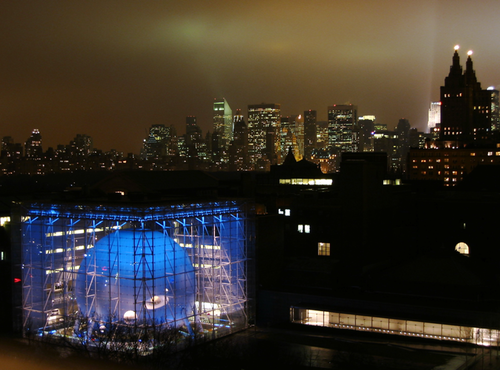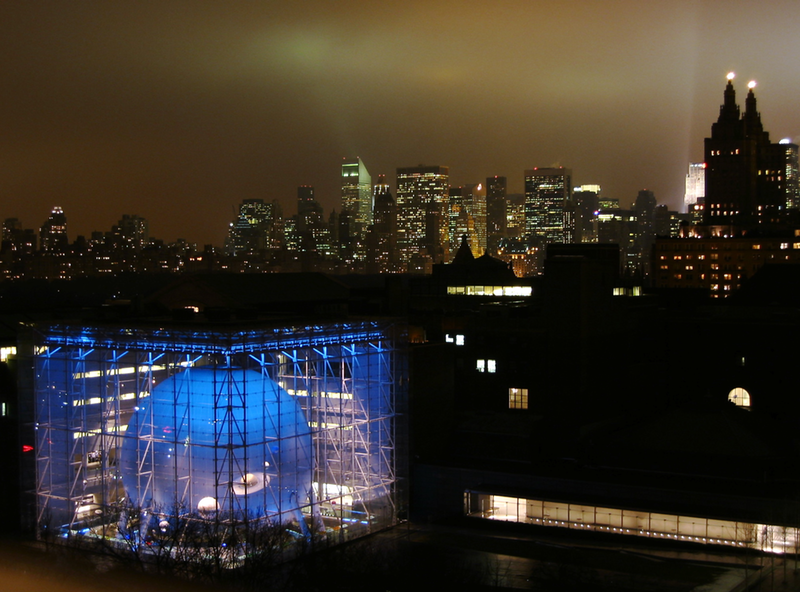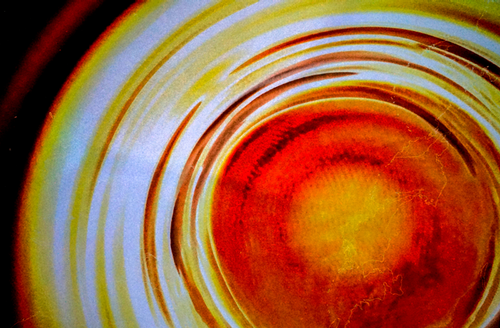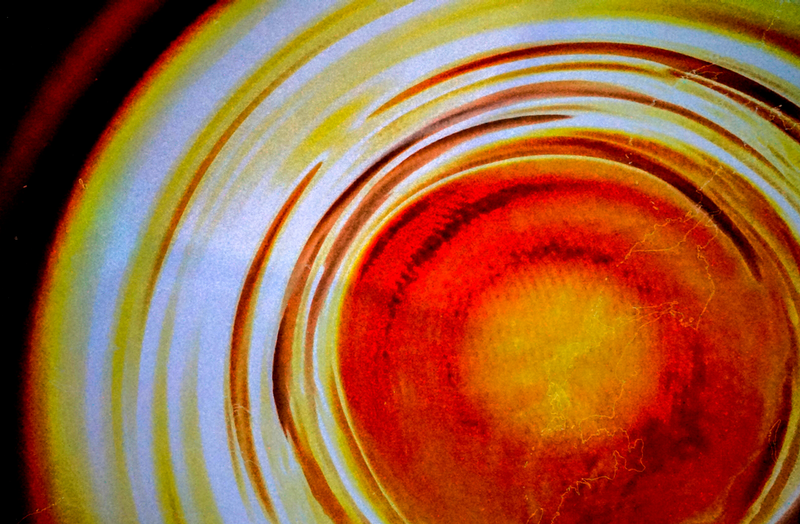Arts & Culture: Hearing Earth’s Creaks
Humans can’t hear earthquakes. The vibrations, or seismic waves, produced when Earth’s tectonic plates suddenly jolt past each other have frequencies well below our audible range. The rumbles associated with earthquakes instead come from buildings shaking, rocks falling, or the ground rupturing open—that is, from effects of the vibrations rather than the vibrations themselves. But what would earthquakes sound like if we could hear them? This question posed by musician and sound designer Jason Candler to geophysicist Ben Holtzman in 2005 started an 11-year-long exploration to uncover the sounds of earthquakes, which is still ongoing. On November 19th, the Hayden Planetarium in New York City hosted SeismoDome, the latest chapter in this project.
SeismoDome is a show that takes the audience on a journey deep inside Earth, immersing it in the sights, sounds, and in some cases shakes of earthquakes as seismic waves move through and around the globe. The planetarium’s dome-shaped screen is transformed into Earth’s crust with the audience locked inside. Dots representing quake events dance across the globe, while the planetarium’s speakers play the sounds of seismic waves made audible by speeding their frequency up a few thousand times. Low-frequency earthquakes and aftershocks rattle chairs in the theater creating a multisensory experience. The experience was transfixing and at times overwhelming.
“A planetarium had never been used in this way before,” said Holtzman when I spoke to him about the project prior to the show. “We try to gradually pull people out of their normal space and time, compressing more and more time into minute-long movies, [so they] perceive Earth in a way no one has experienced before.”
The project started as audio only: The sounds of earthquakes played through eight speakers arranged in a circle. The listener tracked waves with their ears as they bounced between speakers. “The sounds were very abstract,” said Holtzman. Without visuals, the team spent most of the show describing the source of the sounds, with little time to discuss science. A later inclusion of graphics and animations on a TV screen allowed them to shift the discourse up a notch. But the visuals and sounds were still disconnected. Going “whole hog” and using the planetarium’s dome for the video and its speakers for the audio eliminated this problem. SeismoDome was born.
SeismoDome IV—the fourth planetarium show by Holtzman, Candler, and artist Douglas Repetto, and the one I attended—focuses on four 21st-century earthquakes. First up is the 2004, magnitude-6.0 jolt of the San Andreas Fault at Parkfield, a town in southern California with a population of 18 people. Seven years of data recorded from January 2001 to December 2007 by nearby seismometers were squashed into a 45-second movie. Each quake event during the 7-year period was assigned a sound and color according to its magnitude. The snap of “firecrackers” filled the theater while the dome lit up with a stream of flashing purple and white dots, one for each earthquake. A loud pop in the middle marked the 2004 event. I was startled by how alive and vibrant the Earth is—the seismometers picked up thousands of earthquakes over this period, most (thankfully) too tiny to be felt by California’s residents. Earth is constantly crackling as its tectonic plates shift around.
Next up came Haiti’s 2010, magnitude-7.0 earthquake and 52 major aftershocks, Tōhoku’s 2011, magnitude-9.0 earthquake that triggered a tsunami with 40-meter-high waves, and Sumatra’s magnitude-9.2 earthquake in 2004, the third-largest ever recorded. The gentle pops of Parkfield’s firecrackers were replaced with the thuds of raindrops pounding on a tin roof interspersed with thwacks of lightning as the earthquakes grew in power. My seat rumbled as low-frequency sound waves from the theater’s speakers shook the room. I jumped when the boom of the Sumatra quake crashed overhead.
The final leg of the journey zooms in and out in time, capturing the sounds of normally unnoticed features of seismic data: the continuous background hiss of gently vibrating plates; the chirps and tweets of stormy ocean waves deforming Earth’s crust; the throbbing echoes that bounced around for days after Tōhoku’s earthquake hit. The maps of events were replaced with the waves that emanate from quake events and travel through Earth, like those from pebbles dropped in a pond, diverting around obstacles and interfering with other waves in their paths.
The movies are “gorgeous to look at,” said Repetto, who worked on the visuals, when I spoke to him via Skype—he has just moved to Memphis and was unable to attend the show. “But you also get the physical feeling of how powerful and active Earth is. It’s literally vibrating all the time with signals passing all the way through Earth, resonating back and forth…but humans perceive a little sliver of that.”
“Seeing, hearing, and feeling the earthquake waves all at once was effective at bringing them to life,” said Sam Milder, a researcher at New York City Department of Education who attended the show. “I [have] a deeper understanding of how earthquakes happen through a gradual buildup of tension in tectonic plates and how these forces lead to earthquakes distributed seemingly at random across both fault lines and time.” Milder attended with his friend Umut Sayin, a 3D sound engineer visiting from Barcelona. “[SeismoDome] is a truly unique experience,” said Sayin.
–Katherine Wright
Katherine Wright is a Contributing Editor for Physics.







